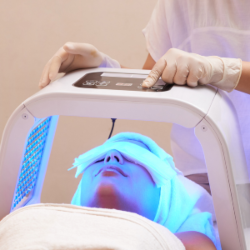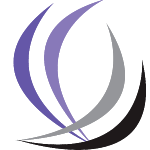 Polycystic ovary syndrome (PCOS) is one of the most common endocrine disorders in women, affecting 5–10 percent of reproductive-age women. It is characterized by three primary symptoms: irregular periods, multiple cysts on one or both ovaries, and excess androgens. Excess androgens, a.k.a. testosterone, in the body can increase sebum and skin cell production, leading to acne. PCOS-related acne tends to flare in areas that are usually considered "hormonally sensitive," especially the lower third of the face. This includes the cheeks, jawline, chin, and upper neck.
Polycystic ovary syndrome (PCOS) is one of the most common endocrine disorders in women, affecting 5–10 percent of reproductive-age women. It is characterized by three primary symptoms: irregular periods, multiple cysts on one or both ovaries, and excess androgens. Excess androgens, a.k.a. testosterone, in the body can increase sebum and skin cell production, leading to acne. PCOS-related acne tends to flare in areas that are usually considered "hormonally sensitive," especially the lower third of the face. This includes the cheeks, jawline, chin, and upper neck.
People with PCOS tend to get acne that involves more tender knots under the skin rather than fine surface bumps and will sometimes report that lesions in that area tend to flare before their menstrual period, and they take time to go away.
SPA MANAGEMENT
What is the cause of acne and seborrhea in your client?
High androgen levels (hyperandrogenism) present acne, as well as excess hair on the face and body (hirsutism) and thinning of hair on the scalp.
Determine any medications, contraindications, and cautions before proceeding with any spa treatment.
 Treatments that can be offered:
Treatments that can be offered:
- Topical products with ingredients to reduce pore blocking, oil production by the skin, and inflammation can be used to treat acne. Some ingredients may include retinol, benzoyl peroxide, salicylic or azelaic acid.
- Blue light acne treatment is a noninvasive procedure that uses light in the blue wavelength range of 405–420 nm to kill the Propionobacterium acnes or P. acnes bacteria in skin.
- Over-the-counter hydrocortisone cream may help to reduce inflammation (redness and scaling) and antifungal creams help to reduce yeast organisms living on the skin.
DISCLAIMER: Work within the scope of your license/certification.
 About the Author
About the Author
Mórag Currin is a highly sought-after esthetic educator with more than 27 years of spa industry experience and more than twelve years of training and training management experience. She travels around the globe with her training and expertise, helping to raise the bar in the spa industry and to open the door to all people, regardless of skin type or health condition. To learn more about this topic and many other skin challenges, diseases, and symptoms, check out Mórag’s book, Health Challenged Skin: The Estheticians’ Desk Reference.

ASCP Member Discount
ASCP Members receive 30% off Health Challenged Skin: The Estheticians’ Desk Reference. Click the link here to access your exclusive discount!
Frequently Asked Questions:
- What is PCOS? Polycystic ovary syndrome (PCOS) is one of the most common endocrine disorders in women, affecting 5–10 percent of reproductive-age women.
- What are the first signs of PCOS? PCOS is characterized by three primary symptoms: irregular periods, multiple cysts on one or both ovaries, and excess androgens. Excess androgens, a.k.a. testosterone, in the body can increase sebum and skin cell production, leading to acne.
- Can you get pregnant with PCOS? If you have PCOS, it may be difficult to get pregnant, but with lifestyle changes and infertility treatment, pregnancy is possible. Refer clients to their doctor or fertility specialist.
- How can you treat PCOS? To understand how to treat PCOS-related skin concerns, determine any medications, contraindications, and precautions before proceeding with any spa treatment. Estheticians may offer topical products to target PCOS acne and reduce blockages in the follicle, oil production, and inflammation. Blue light therapy is effective against acne bacteria.
- Is PCOS genetic? There may be a genetic link to PCOS, but PCOS has also been linked to other health issues. Refer clients to their physician if they suspect they may have PCOS.
- Log in to post comments
 About the Author
About the Author